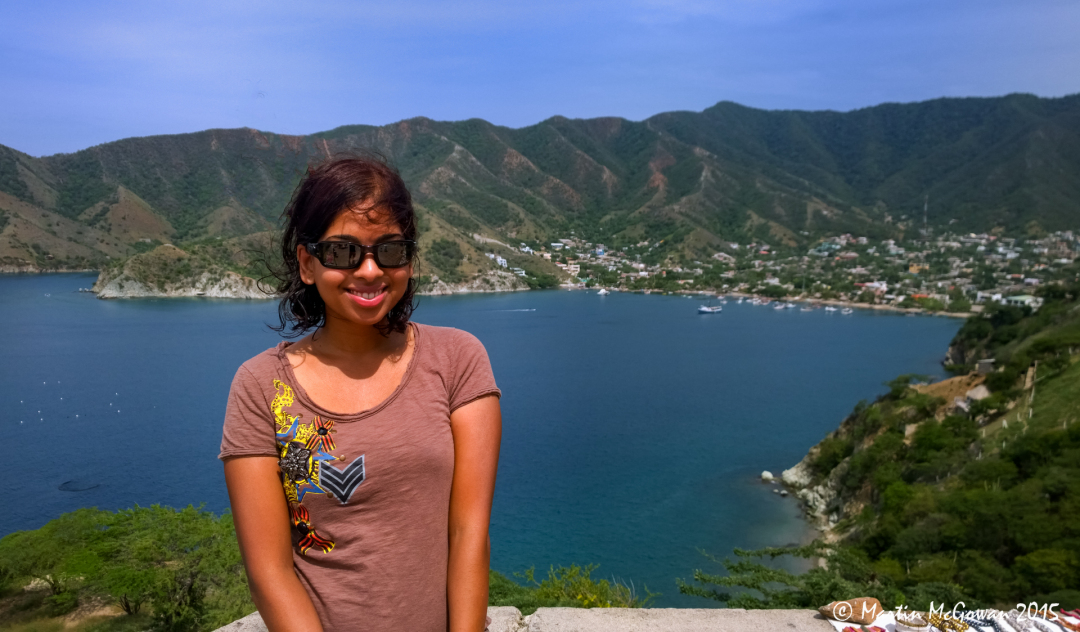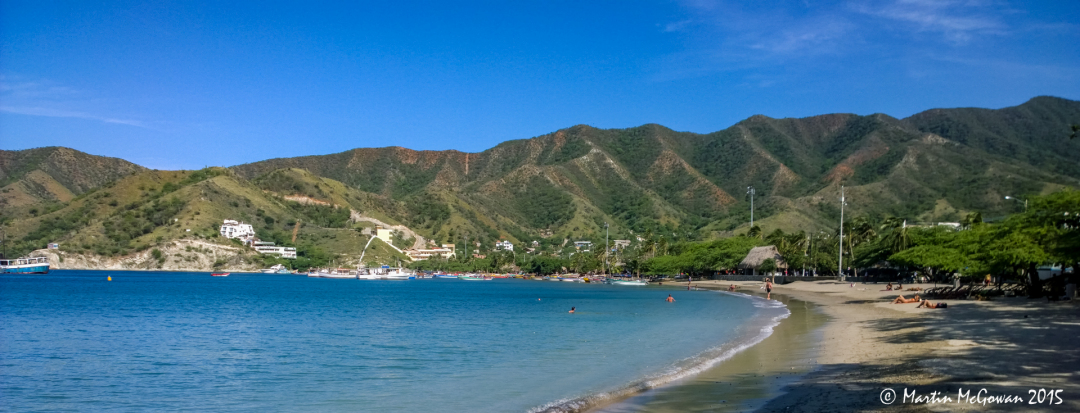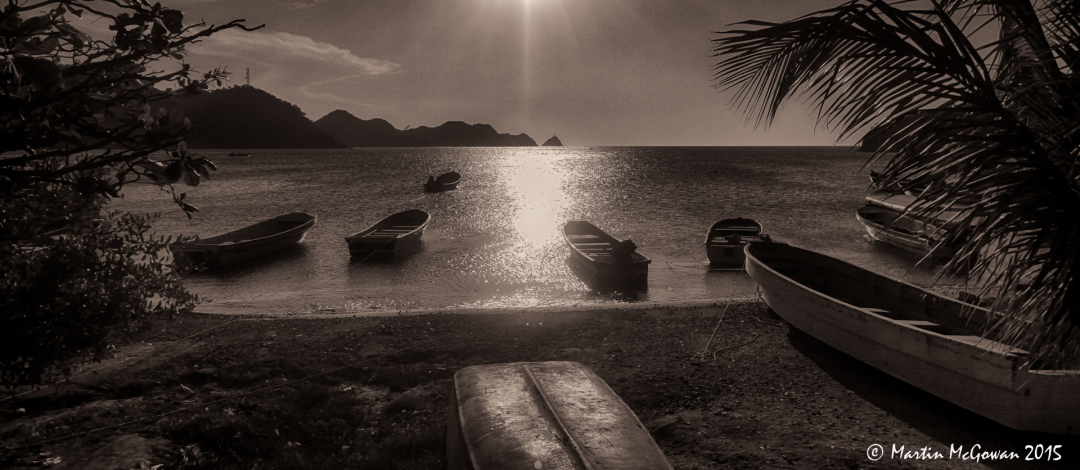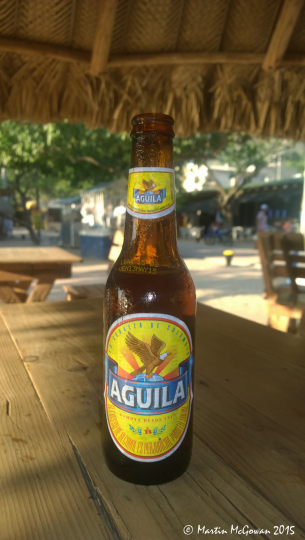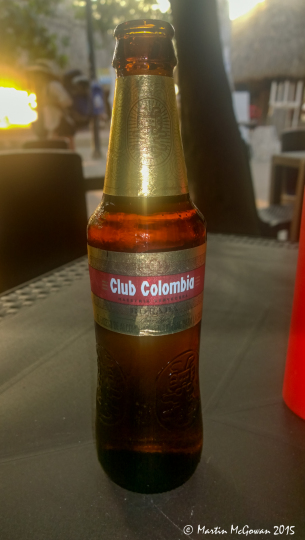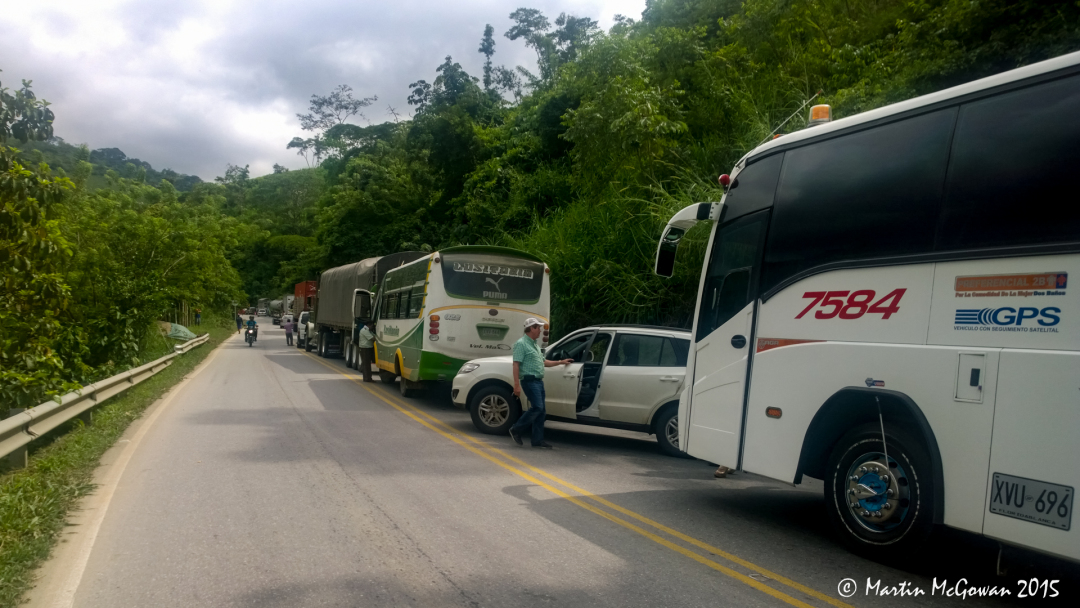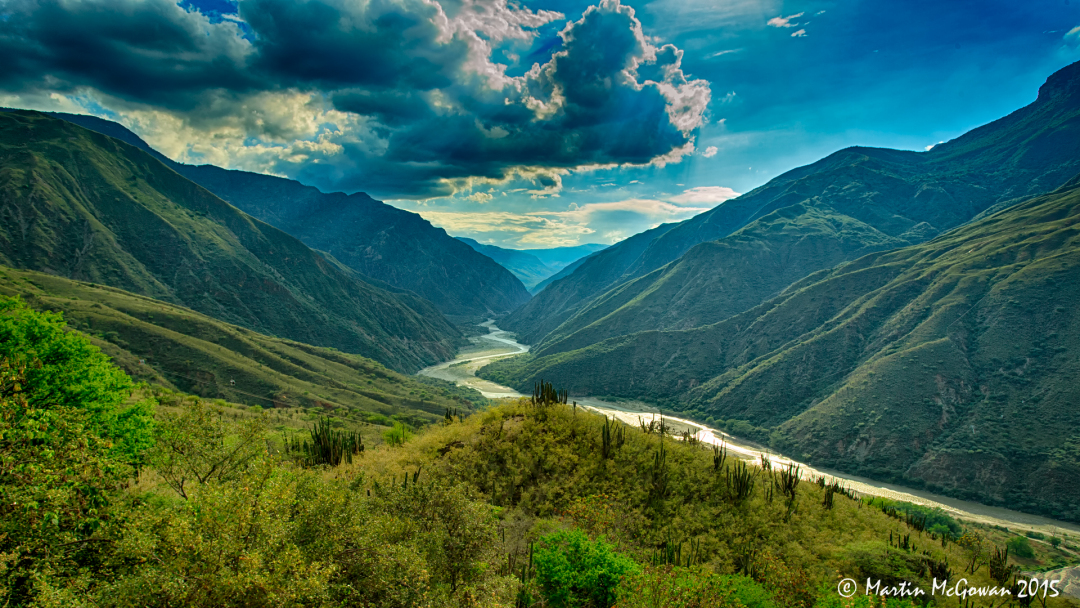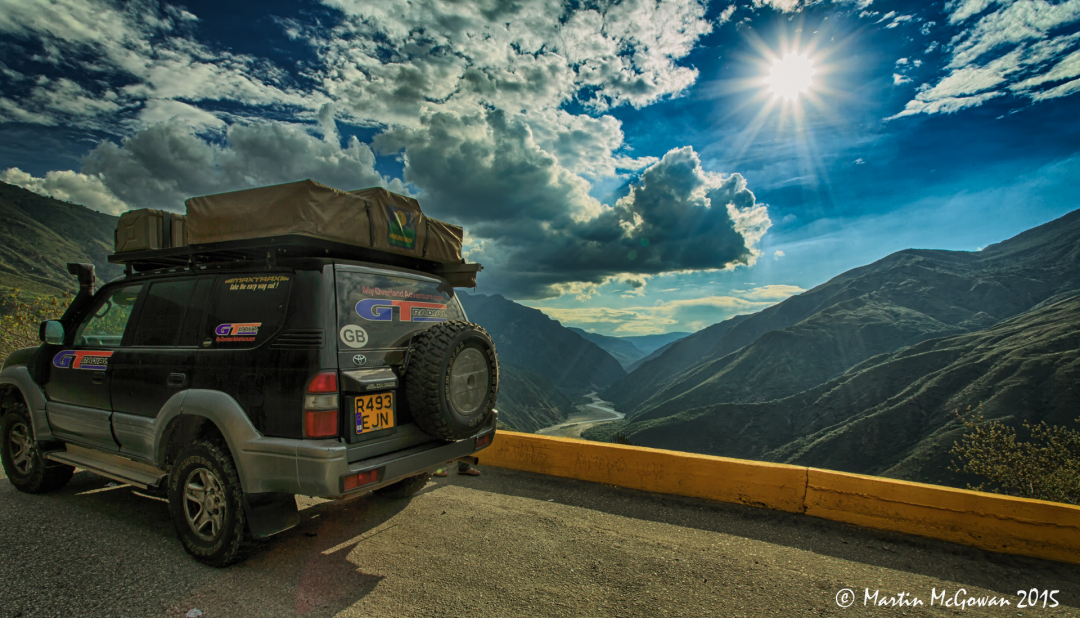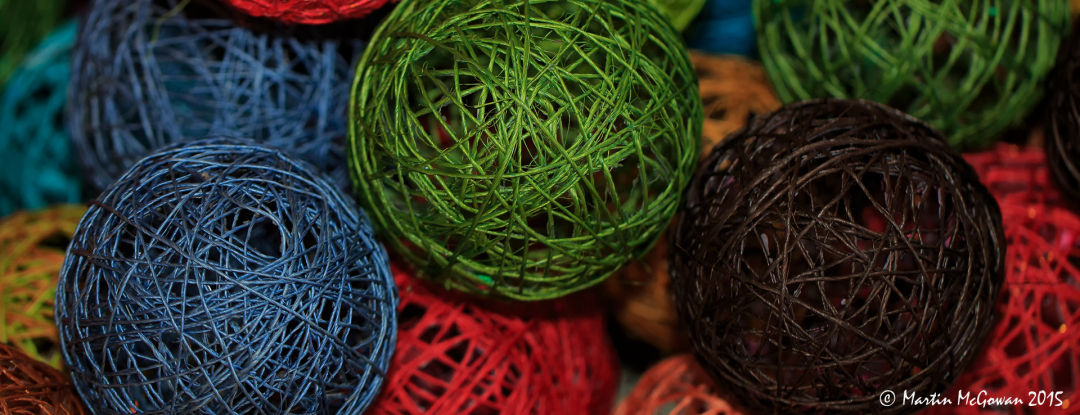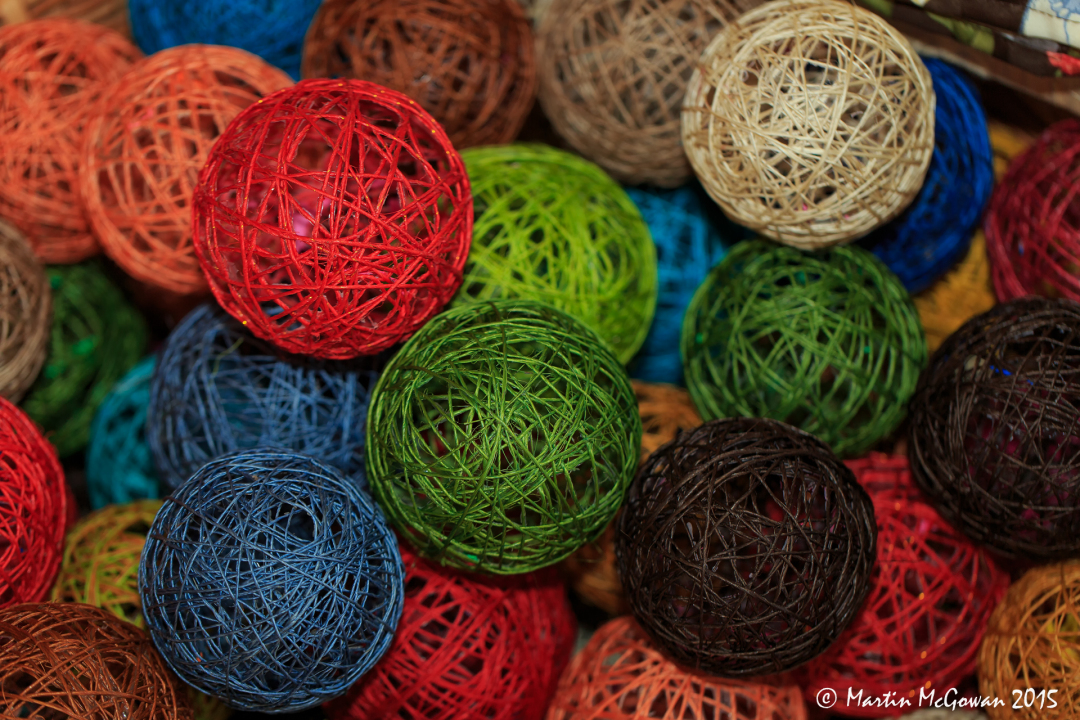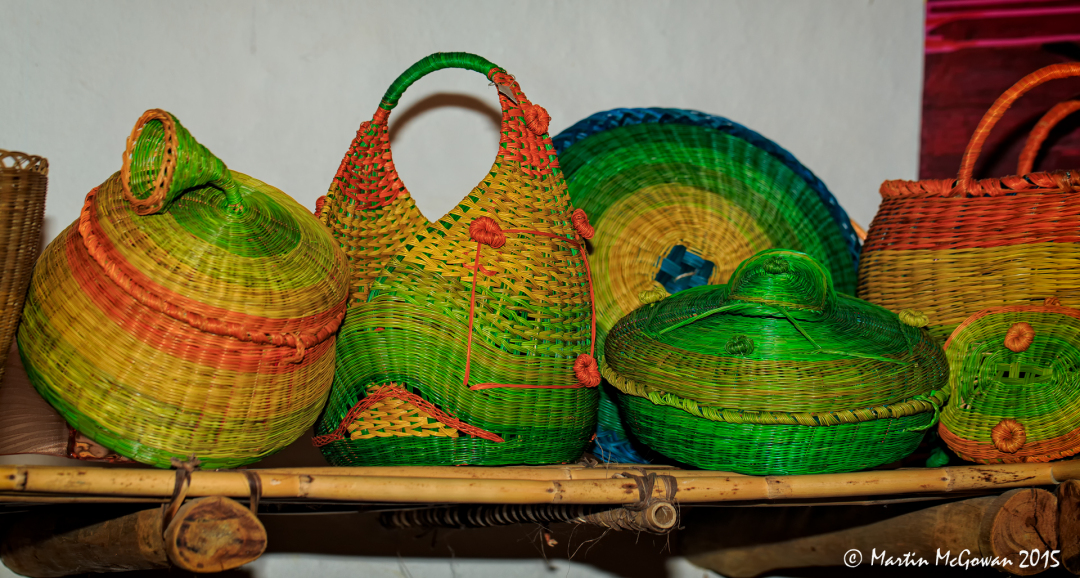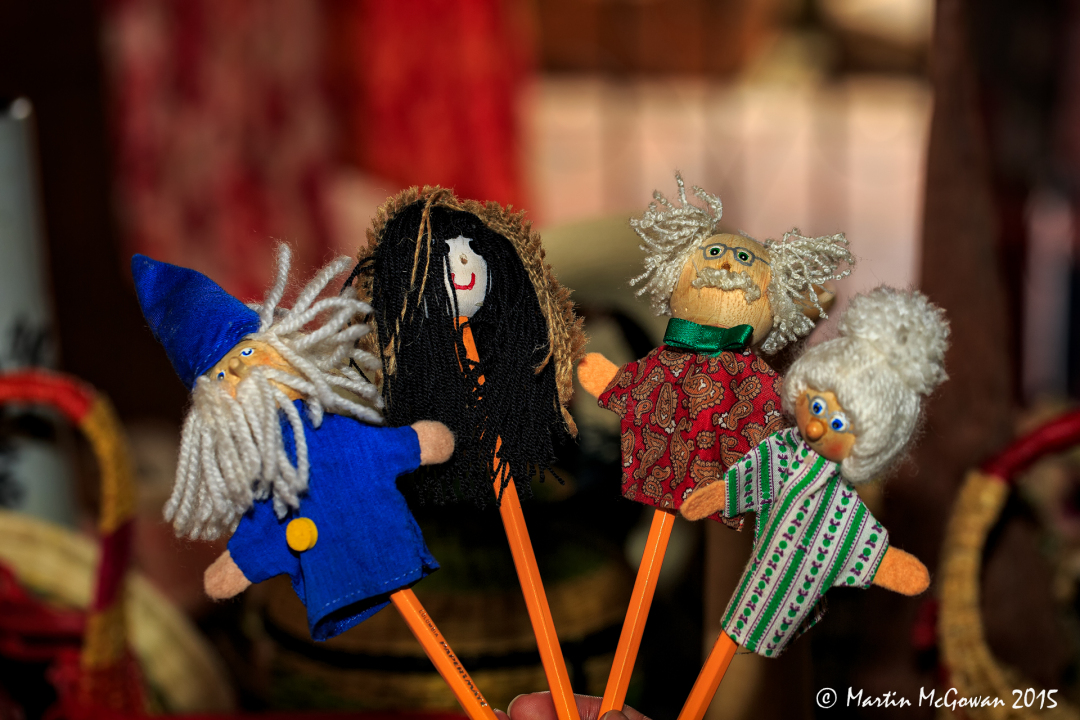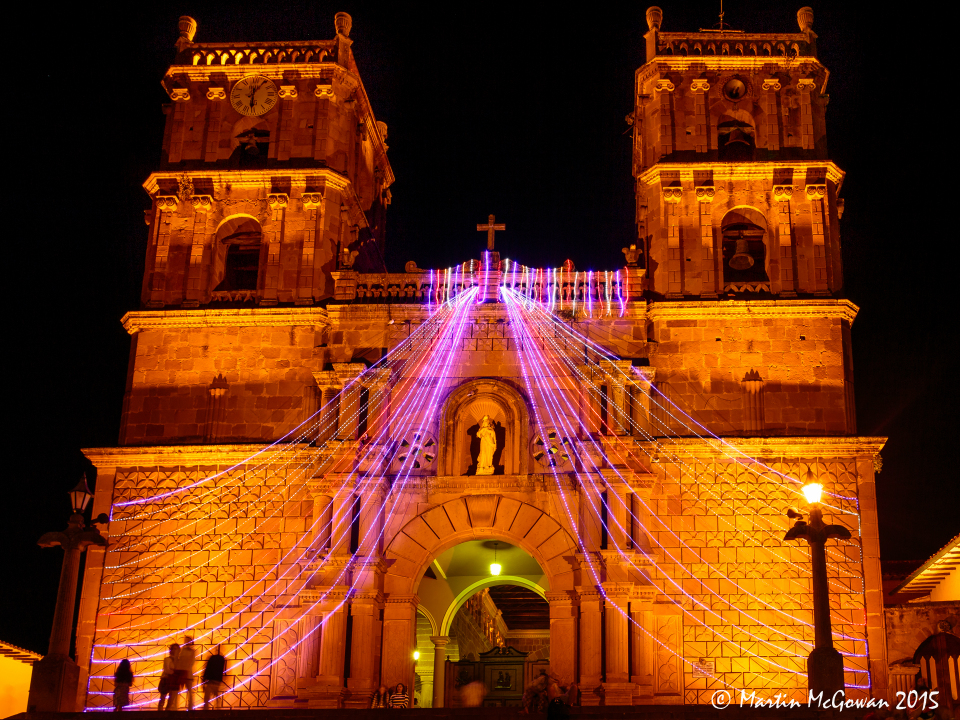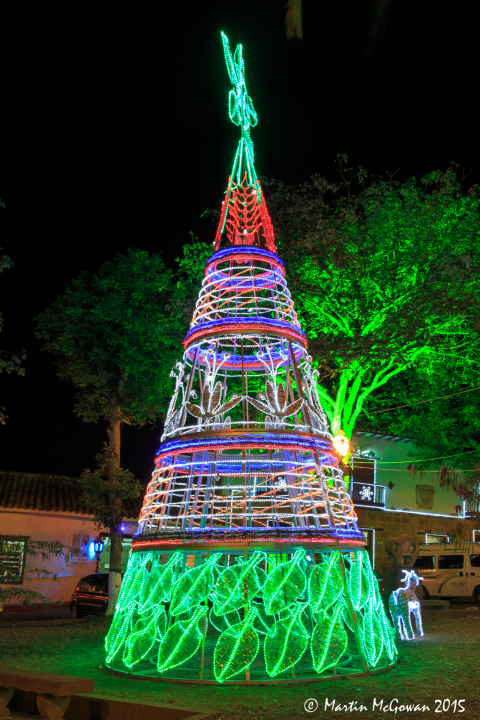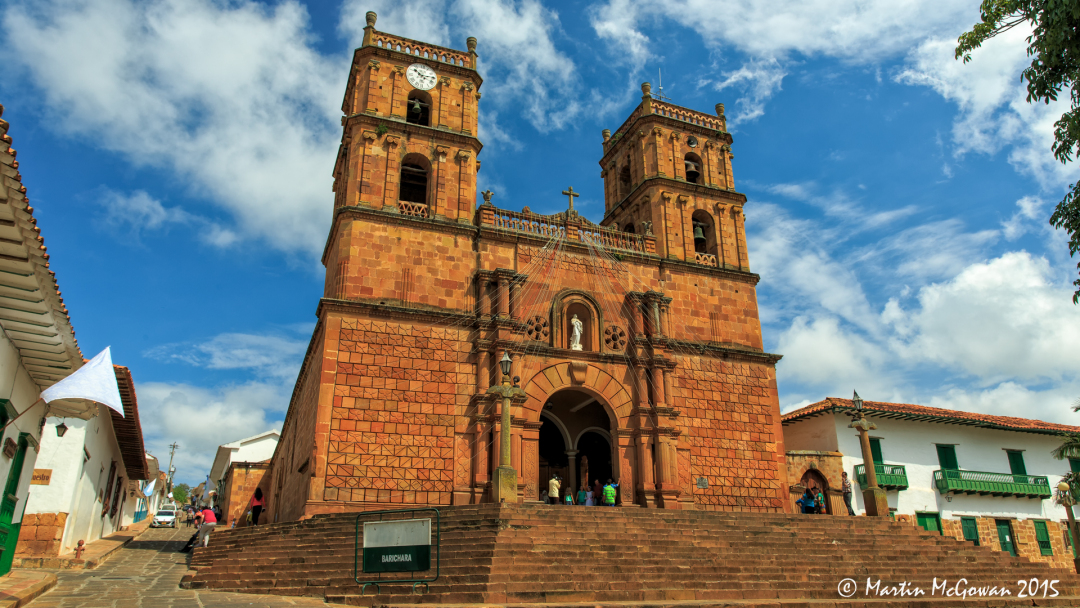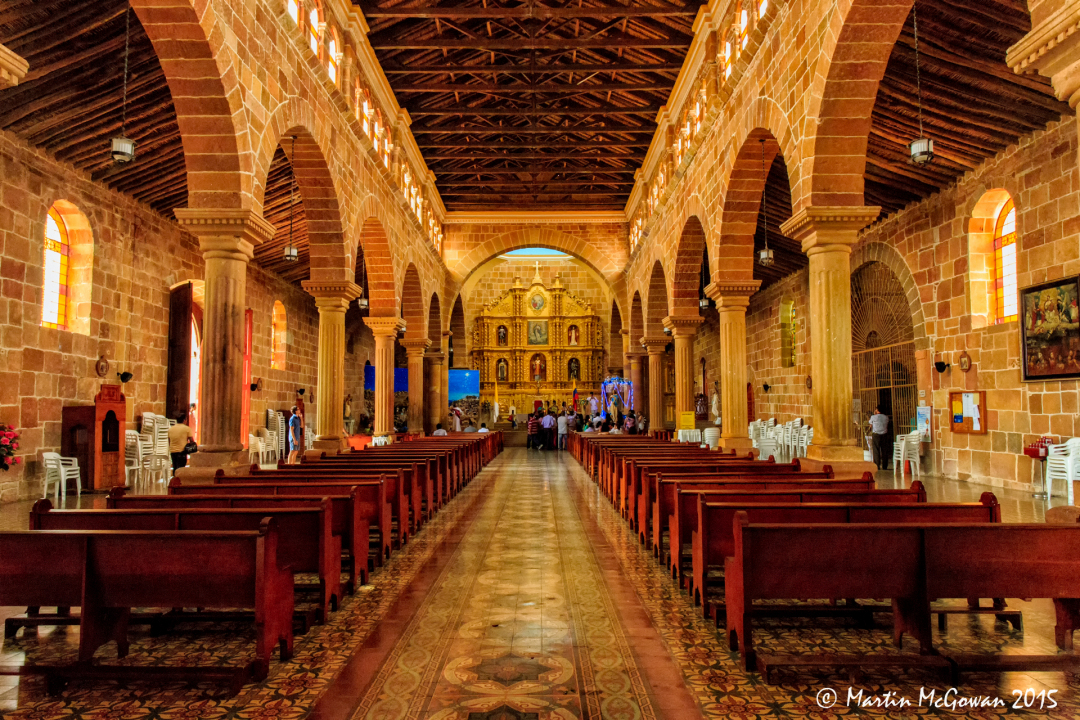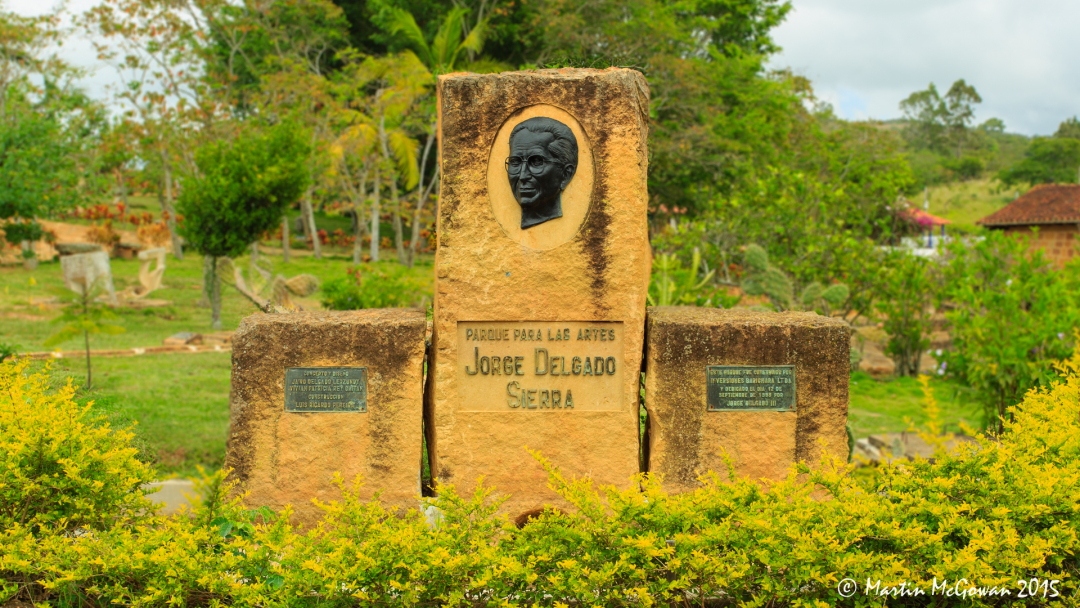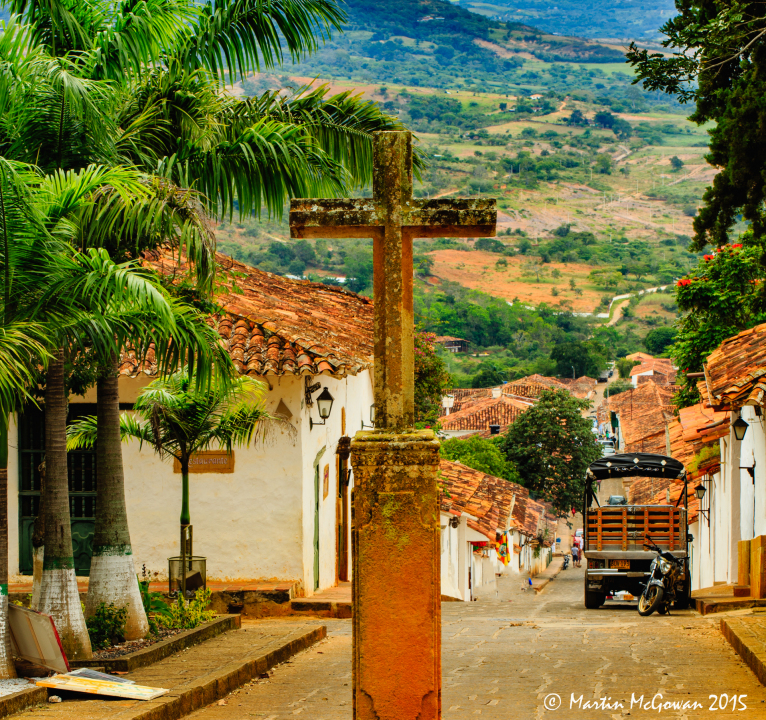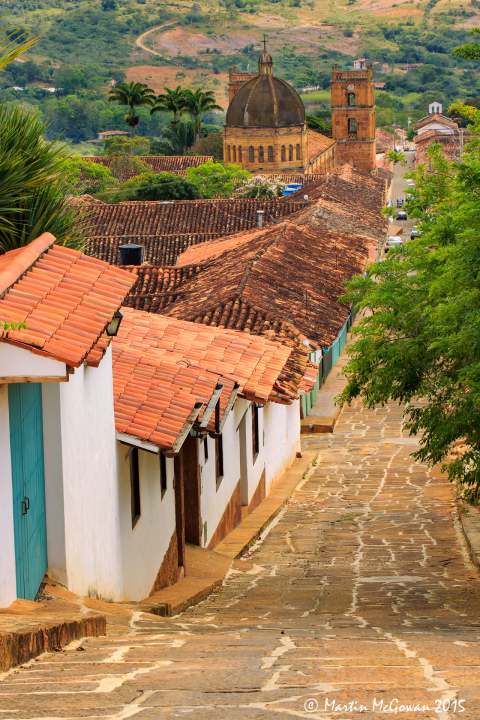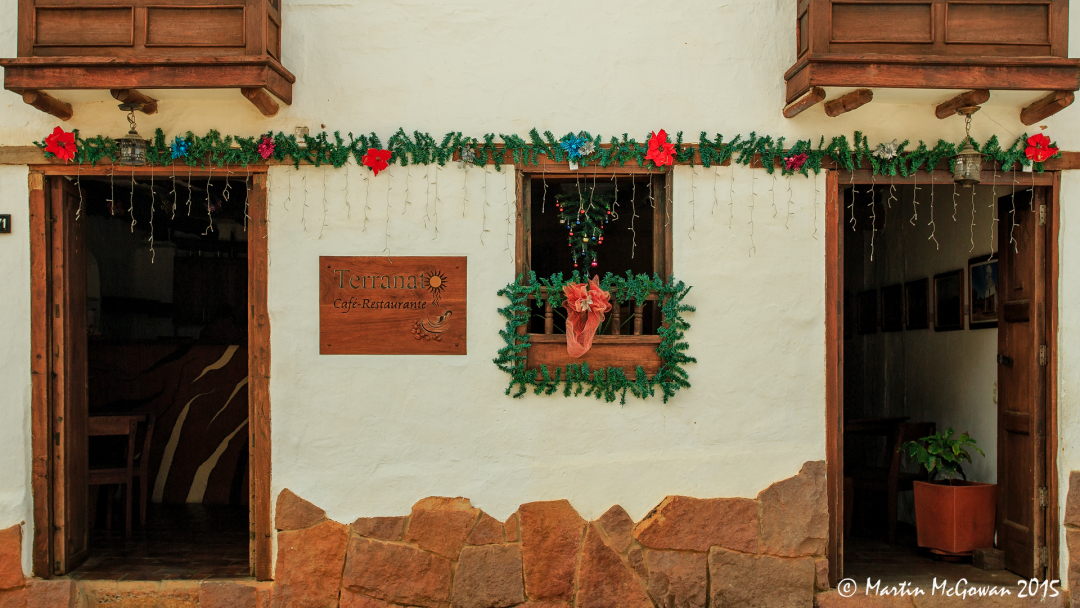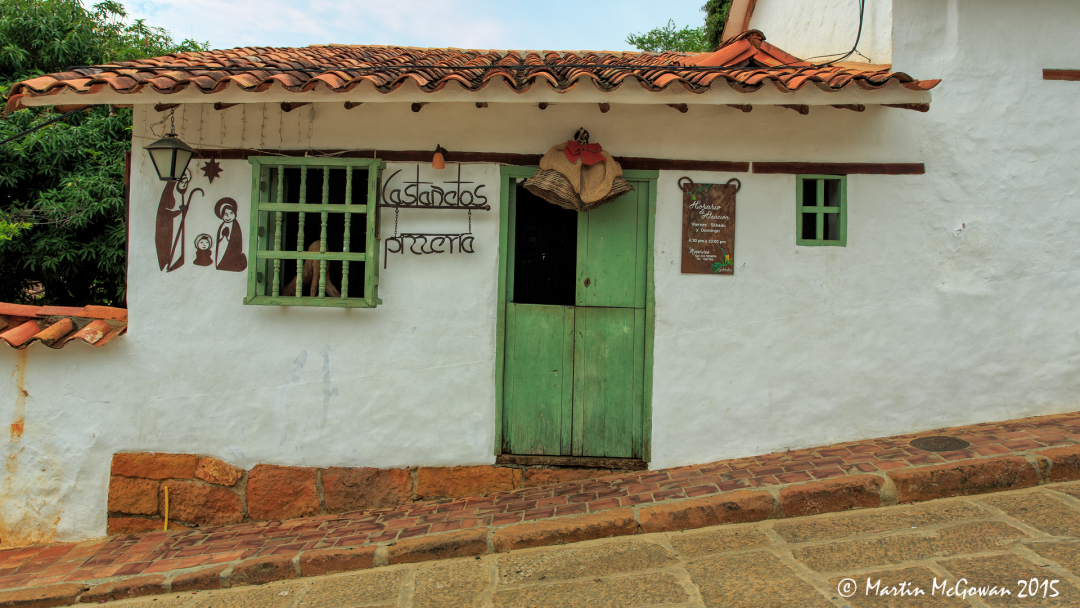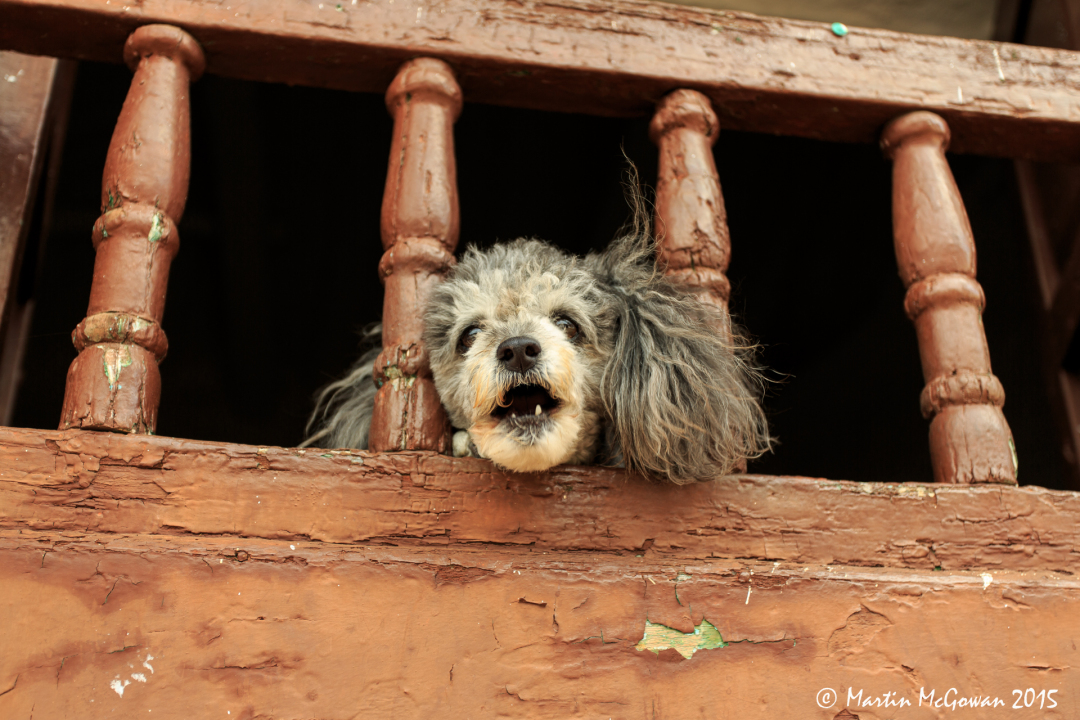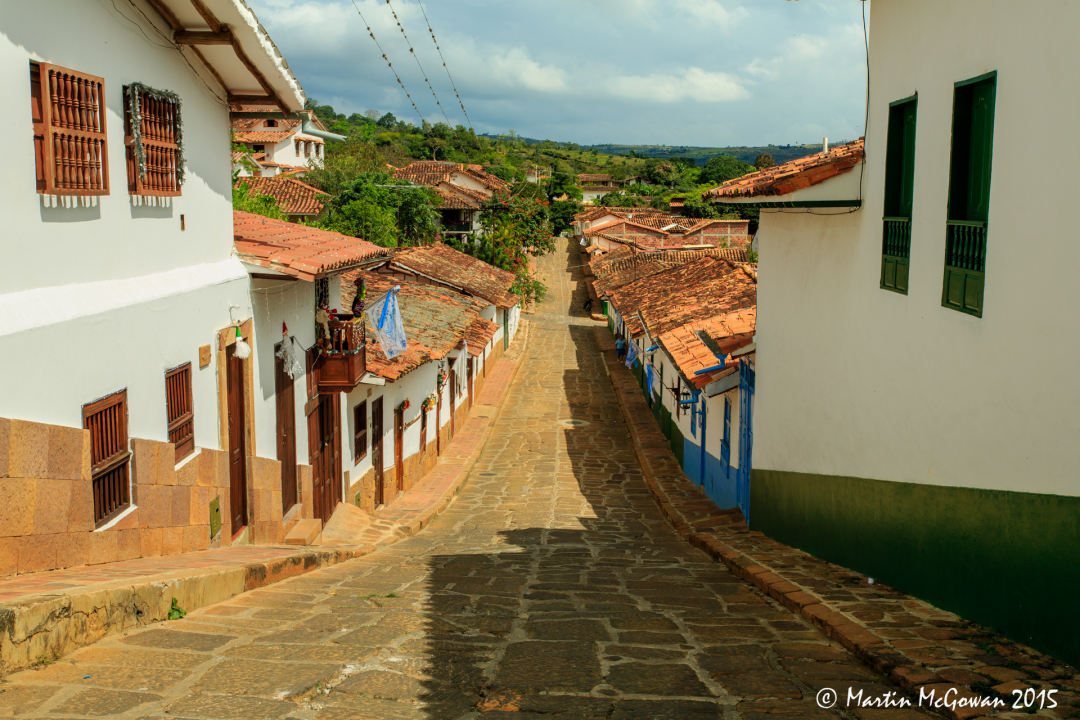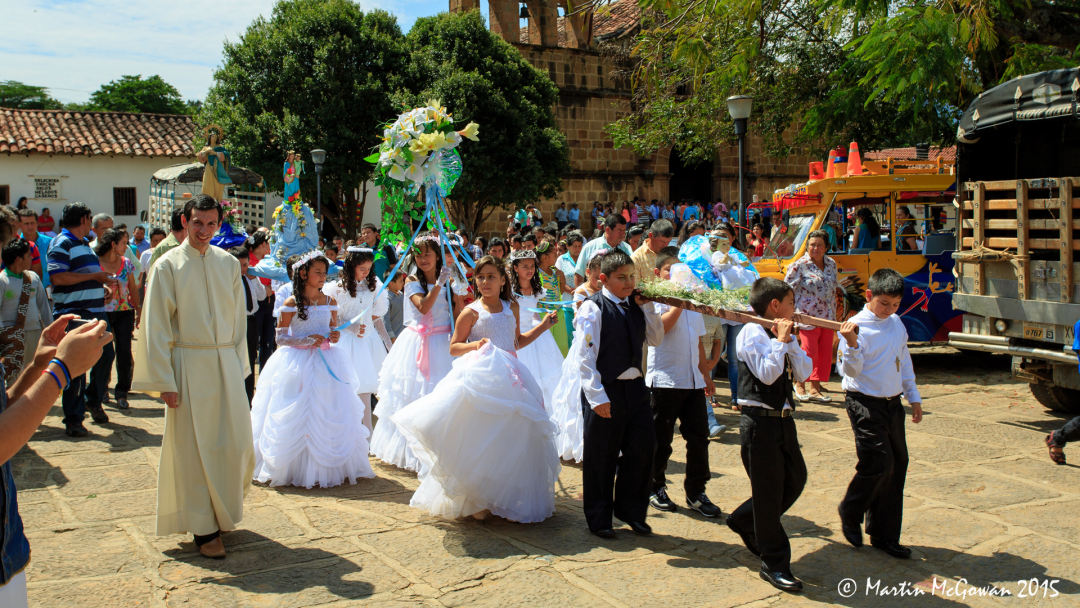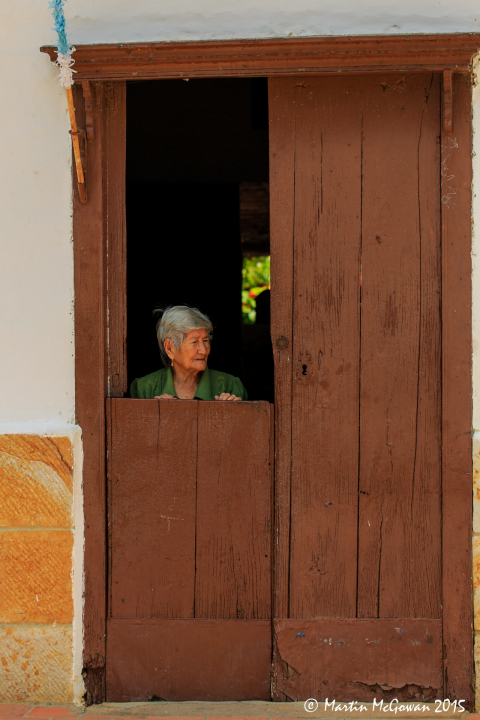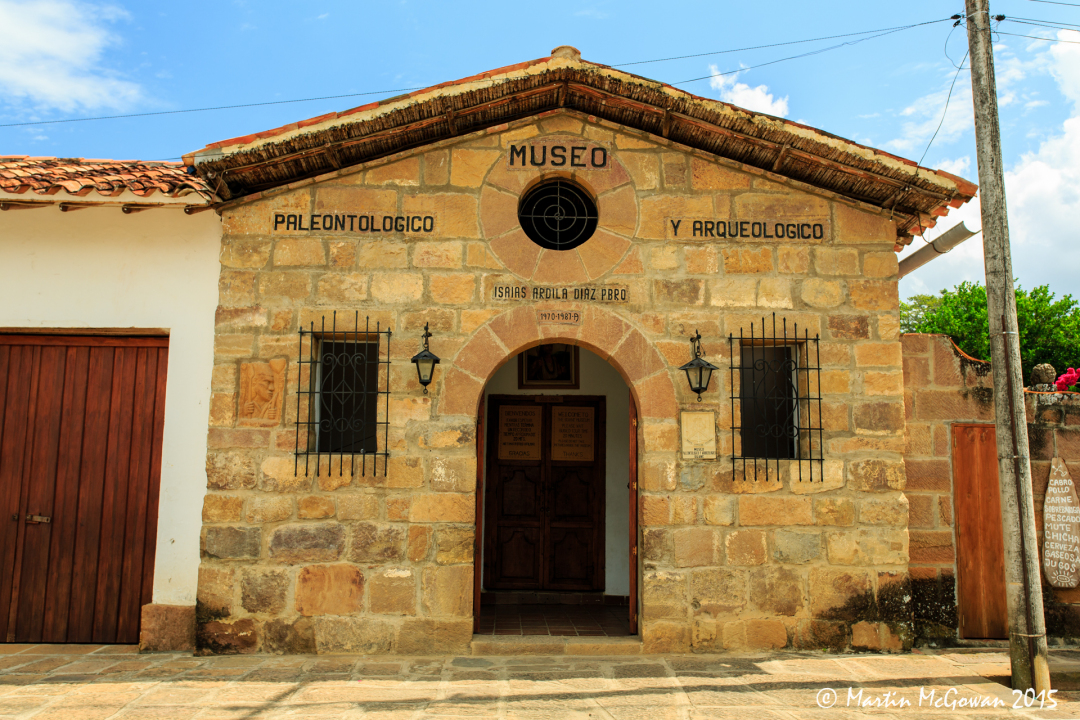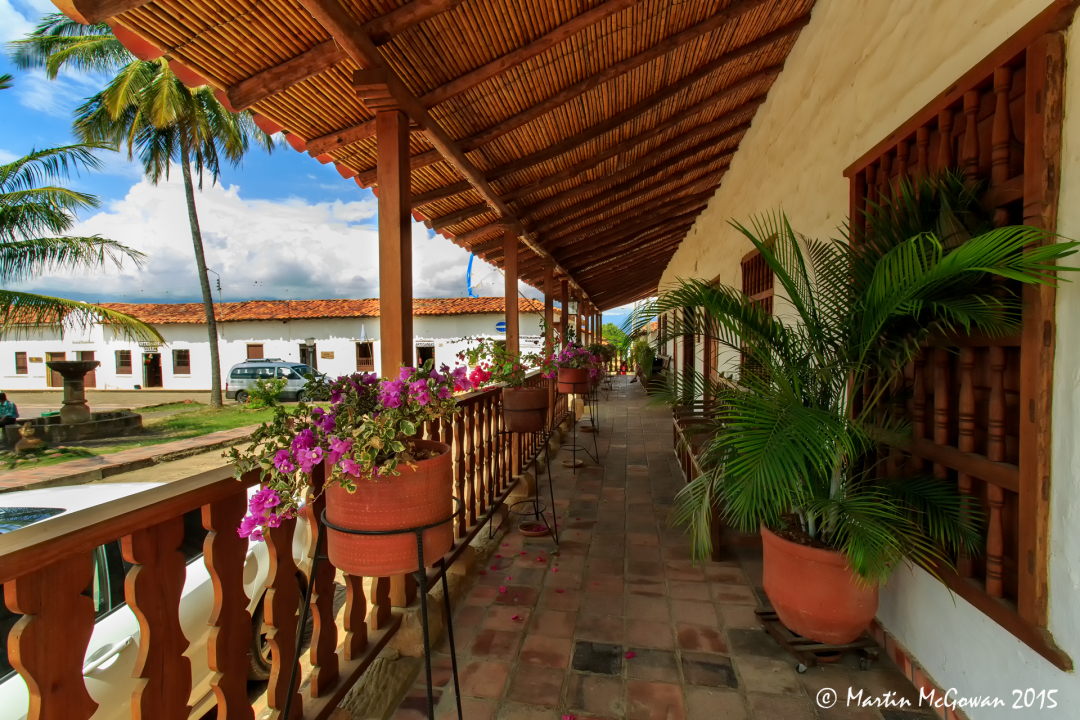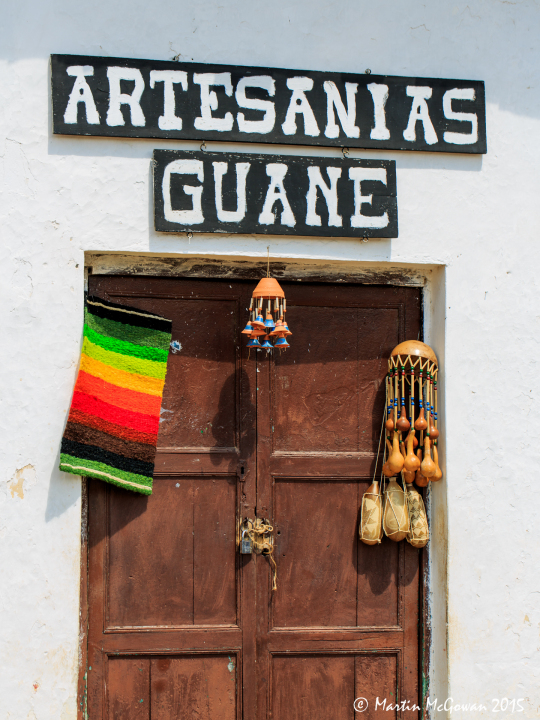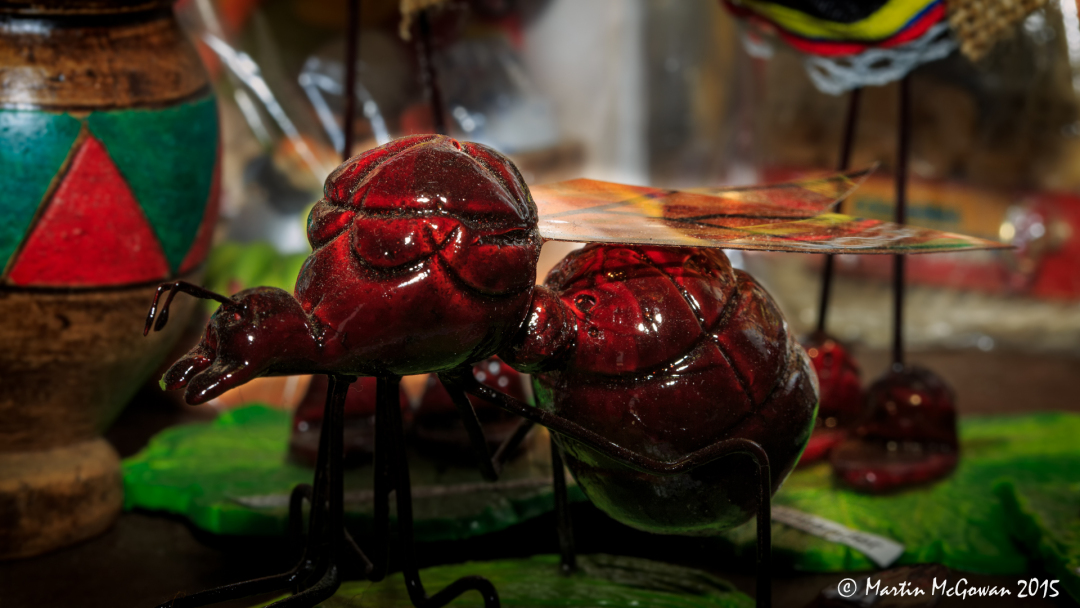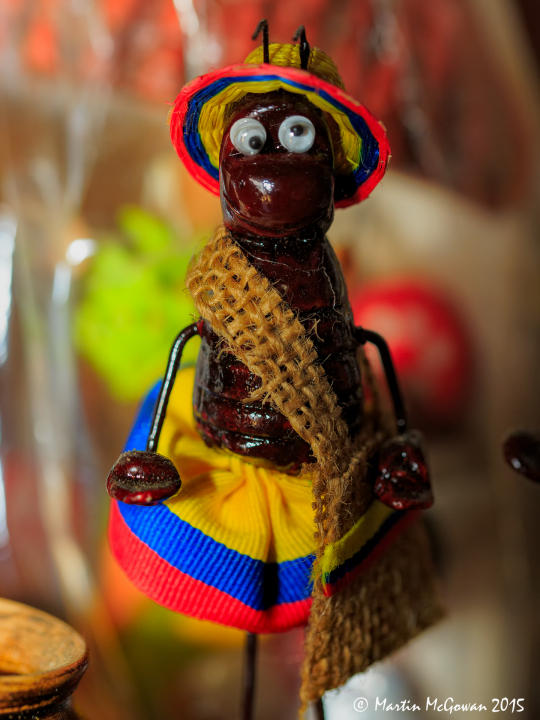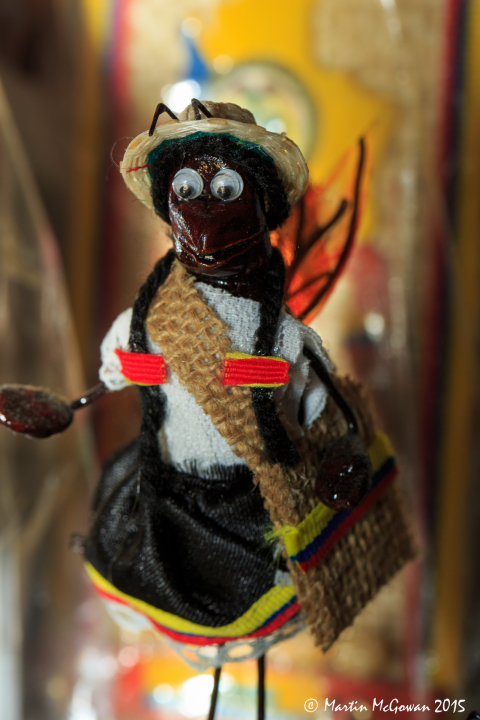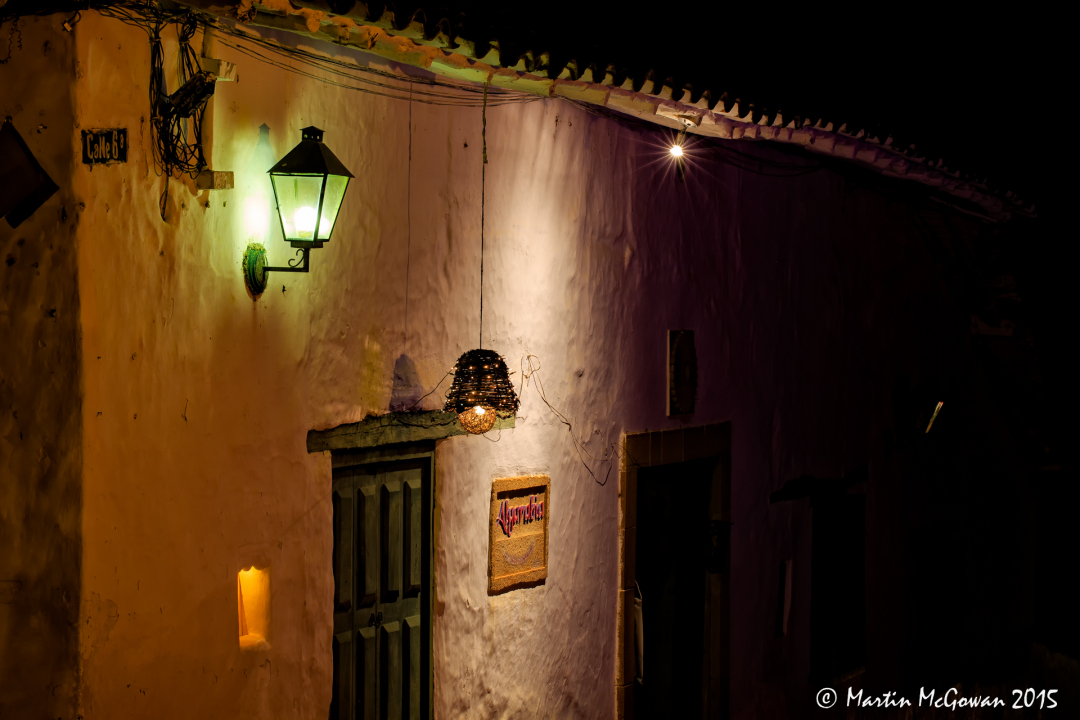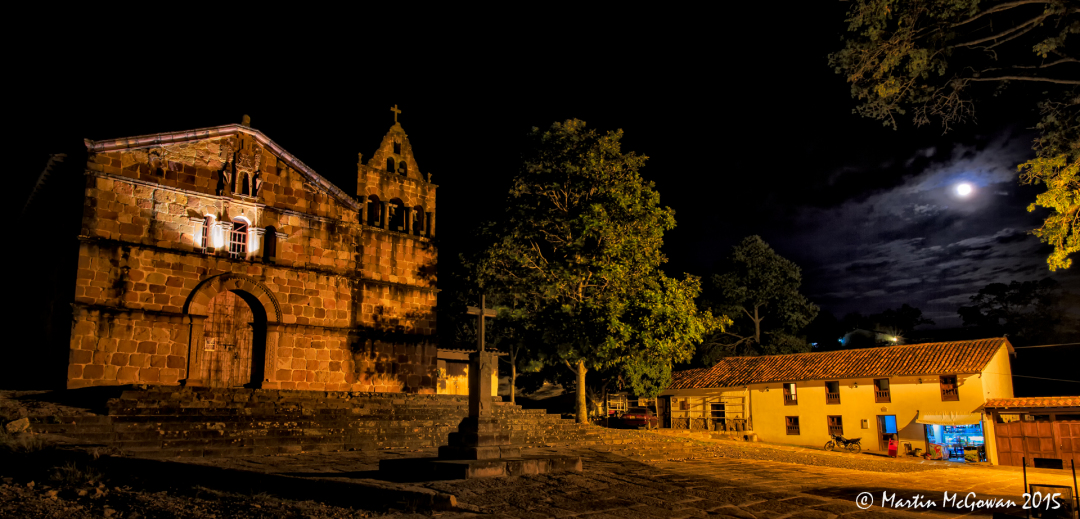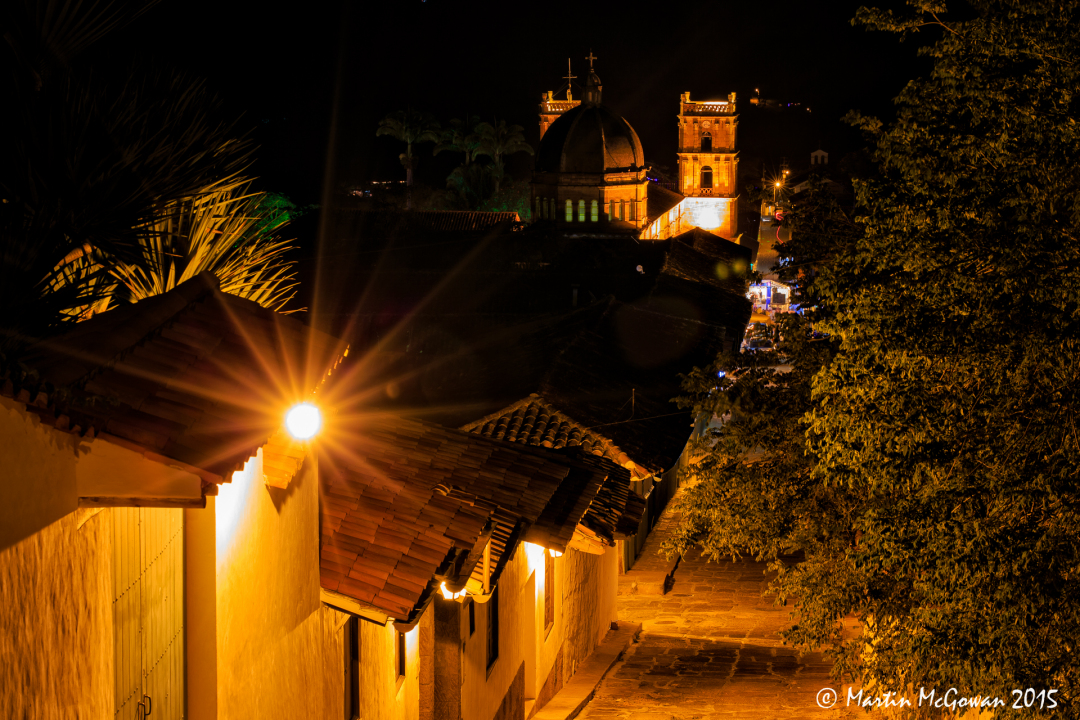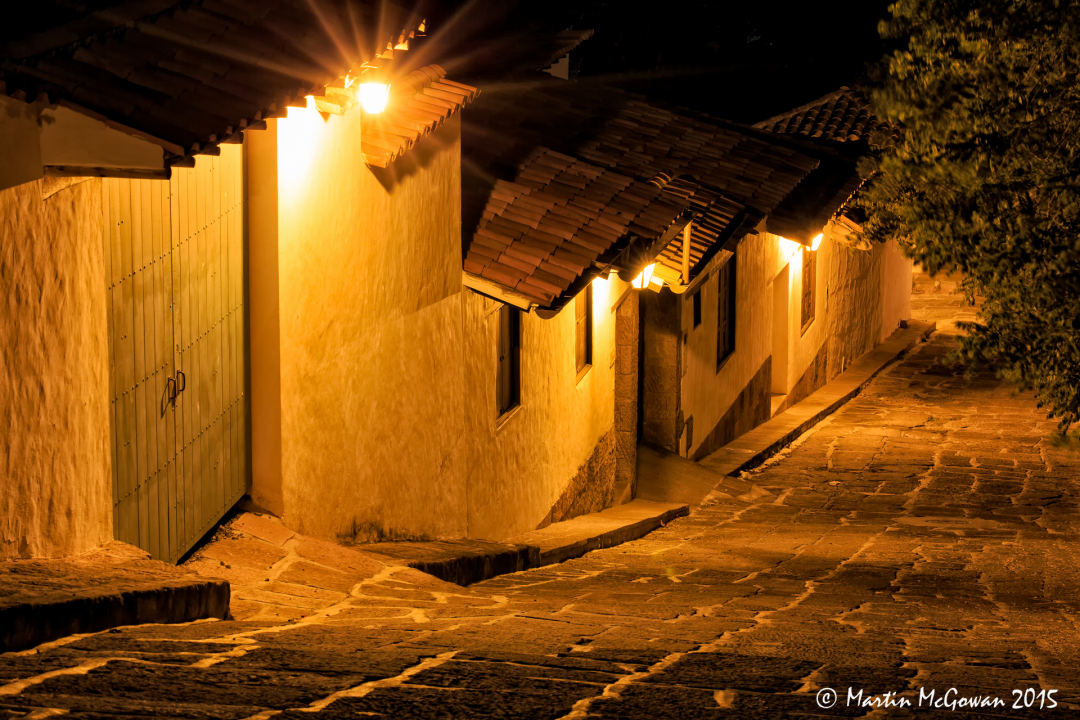1st December TAGANGA
It‘s a long hot four and a half hour drive to Santa Marta in the very north of the country, our base for a visit to Tayrona National Park, on good fast roads. Driving past vast shanty towns and stopping at both police and military checkpoints, it seems a world away from the wealth in Cartagena.
Stocking up on supplies at a large supermarket, we continue on to the hotel we were hoping to stay at, but we arrive to find it doesn’t have any secure parking. There are some places in Taganga, around 5kms away, in our budget so we decide to head there, driving a road with stunning views over the bay and prettily painted fishermen’s houses.
We get there to find the actual town is extremely rough around the edges and quite depressing. Dusty and with no proper roads, it’s not really somewhere we would be keen on staying. Luckily after a bit of searching, we manage to find somewhere out of town with a short walk down to the beach and along a rocky cliff edge to a touristy area with restaurants and shops. The area close to the beach is much more appealing, and surprisingly there seem to be quite a few tourists around.
Once a small fishing town, it now draws a party crowd although it is still quite relaxed. Apparently, the town is popular with Israeli travellers after completing their military service, similar to Lake Atitlan in Guatemala where we had spent a month taking Spanish lessons.
We stop for a couple of afternoon beers and rum and cokes at one of the thatched huts overlooking the waters of the Caribbean and watch all the small fishing boats bobbing around in the waves. The deep horseshoe bay glistens in the hazy afternoon sun. Unlike Cahuita in Caribbean Costa Rica, the reggae beat is replaced with a salsa one! Dinner is a yummy arroz de camarones (shrimp rice) and a mixed grill. As we are eating, two men walk in and around to the courtyard area, one carrying an injection. The waiter explains (in Spanish) that there are too many stray dogs around here and they have to be euthanized to reduce the numbers. A few minutes later, we see them carry a dog upside down out of the restaurant and into a waiting van outside! That’s a new dining experience on us!
We walk home along the now deserted beach back to our hotel, saying goodnight to the two police officers standing guard by the cliff edge before clambering across, jumping to avoid the waves lapping against the rocks underfoot.
3rd December
We leave relatively late driving to a town which is nearer the park entrance but the hotel we had booked has a height restriction on their outdoor parking which we can’t fit through! Aaagh! Sometimes it is just a complete nightmare having a huge car! After looking at a few shady options down the road, we end up in a place which has one cabina left. Of course, it has to be at the very top of the property and we have to climb what feels like a hundred stairs to get to it, dragging our bags behind us (in 34 degrees plus heat)!
On closer inspection, we realise that the cabin is not completely meshed and although the sides are covered, they did not bother to finish the roof. As soon as we turn on the light, our room is filled with all kinds of gigantic moths and small bugs. To top it off, their mosquito net is not big enough for the bed and we know this is their last room. Eating in their restaurant is not a pleasant experience either with a 45 minute wait and then both meals covered in salt, it wins the accolade of one of the worst meals we have ever eaten on the trip so far! Not the greatest day we have ever had!
4th December SANTA MARTA
After a sleepless night, we can’t bear the thought of walking in the heat and humidity through the park so instead drive to central Santa Marta set in the foothills of the Sierra Nevada mountain range. Founded in 1525, it was the first permanent Spanish settlement in Colombia and is also famous for being the final resting place of Simon Bolivar in 1830, after bringing independence to six Latin American countries.
It is a popular place for Colombians to take their holiday; the place is absolutely packed with people taking advantage of the city’s beach location, soaking in the sun and sand.
After checking in, we take a leisurely stroll around the bustling beachside city down to the recently renovated seaside promenade on Avenida Rodrigo which has huge sea god inspired statues overlooking a bay and pretty views over rocky islands just offshore. Down the quiet pedestrianised roads there are lots of cute cafes and restaurants. We are approached by a normal looking lady trying to sell us a half opened bag of marshmallows which is a little bit odd. We find a good small restaurant in town at a great price before heading home.
5th –6th December LONG DRIVES TO SAN GIL
It‘s a huge 640km drive from Santa Marta to San Gil which is located towards the central eastern part of the country in the Santander region and we are not looking forward to the next couple of days long drives. Today our stopping point would be the town of Aguachica which takes us about 7 hours. It’s a dangerous nightmare drive with hundreds of slow moving trucks on the road, resulting in us having to continually overtake. There are a few occasions which are a bit too close for comfort.
It is not easy and quite stressful overtaking in a right hand drive vehicle. I have to judge it then subsequently tell Martin whether it is safe to go or not as 10 tonne trucks come careering towards us! Luckily we make it in one piece to the town and find a cheap hotel for the night. However, we get no sleep as party music is booming into our room pretty much all night long.
With virtually no sleep, the next morning we set off for round two of the drive thinking ‘It can‘t be much worse than yesterday‘. Well, we are wrong as it seems this is slow moving humungous truck territory!
A crash on the 45A near Las Boacas in the mountains sees us sitting there for two hours before we get moving again.
On route we stop at Parque Nacional del Chicamocha; the park is quite built up and feels more like a theme park. We catch the view and head on.
The tortuous drive ends 8 hours later as we finally arrive in San Gil relieved to have got there safely, and find a friendly hotel outside of the centre on the main road.
We park up in a paid parking garage just outside of town and walk in climbing a ridiculously steep road and then past boutique shops, rotisserie chicken restaurants and tiny niche shops on bustling cobblestoned streets decked out with Christmas lights.
As we get to the main square, we find a concert going on with a stage set up and people drinking and dancing! Five men in ponchos strumming away on acoustic guitars are sending the crowd in to a frenzy! We have a great view from the balcony restaurant overlooking the square as we order a menu del dia of soup, meat, rice, salad and mixed fruit for desert.
7th December BARICHARA
We drive into San Gil for breakfast at a local restaurant ordering some empanadas filled with meat and vegetables accompanied with some strong Colombian coffee. San Gil is famous for its extreme sports and we are approached by a couple of people offering various activities as we are strolling around the pretty town centre.
Our next destination is the colonial gem of Colombia, Barichara (along with Villa de Leyva) which is often billed as the prettiest small town in the country and the best preserved which takes us around an hour to get to climbing up along a scenic winding road. A few hotels line the main road leading into town which we enquire at but they are all way out of our budget, although all very nice! Carrying on to Barichara, we park up in the main square and have a walk around town looking around the artisan shops and stopping in the plaza café for coffee and more empanadas. Well, when in Colombia!
We still need to find somewhere to stay for the night so we head back out to the main road and find a small hotel within our budget. In the evening we drive in for dinner, wandering through the main plaza with its assortment of Christmas lights, stopping at the centrepiece church which is also lit up. We end up walking around and look in at a few places before deciding on a small corner restaurant where we get some mediocre food. Oh well, you can’t always trust what tripadvisor says!
8th December
The beautiful colonial hilltop town of Barichara set high above the Rio Suarez is very peaceful with whitewashed walls and brightly coloured shutters overlooked by the imposing Cathedral de la Immaculada Concepcion sitting in pride of place on the main square, dotted with shady palm trees. As we get to the plaza, church is in session and people are dressed in their Sunday best. The atmosphere here is relaxed and unhurried although the heat is a little stifling. In fact, the pace is so laid back that it almost feels as if the town has been forgotten by time.
We walk to the Iglesia de Santa Barbara at the northern end of the town and from there walk along and through the sculpture garden with sweeping views over the Colombian countryside and the river below. Steep streets give our leg muscles a workout but the panorama over the town’s red terracotta-tiled domes from the top make it worth the climb! Declared a national monument in 1978, the town is used as a popular location for many Spanish-language films.
Wandering the cobblestoned streets past cute ice cream stores and shops filled with hats, scarves, handicrafts and quirky items, we see quite a few quaint hostels and think it may be nice to spend a night or two in town but on enquiring they all want at least $100 for a room! Can only imagine they must be pretty nice rooms… In recent years the town’s beauty has attracted an influx of wealthy Colombians looking for a quiet getaway.
A deserted winding country road take us to the small hamlet town of Guane past the site of a small chapel built by locals in memory of a legend in which a farmer in 1702 saw an apparition of the Virgin Mary. We also go past the ancient stone-paved road built by the indigenous Guane people where we see a few tourists attempting the hike (which in the heat, I’m guessing would not be too enjoyable). We pull up in the main square opposite the Santa Lucia Iglesia built in 1720. The square is busy with locals who have just come from the church and there‘s also a festival and procession going on.
Most of the small shops on the plaza also seem to double as drinking dens as the locals arrive for their post church beer!
We walk around the plaza and the small artisan stores filled with lots of colourful handicrafts. The town is known for the strange hundreds of years old culinary tradition of hormigas culonas, fat-bottom ants which were eaten for their supposed aphrodisiac and healing properties! Tins of fried ant snacks line the shelves but for some reason, they just don’t appeal!
The views from the escarpment over the valley heading back are breath-taking.
In the evening, we drive back into town for a pre-agreed dinner at 7 Tigres and some delicious pizza, waiting outside until they open their doors at 6! We have the entire restaurant to ourselves.
After dinner, we stop at the church for some night time views over the town.


